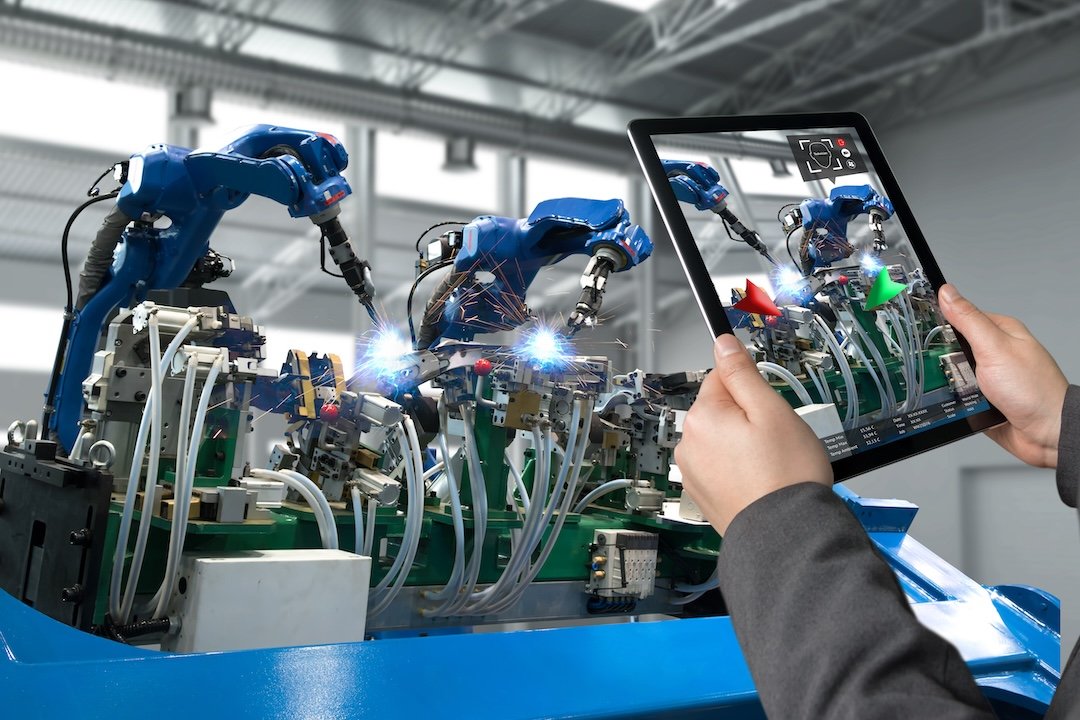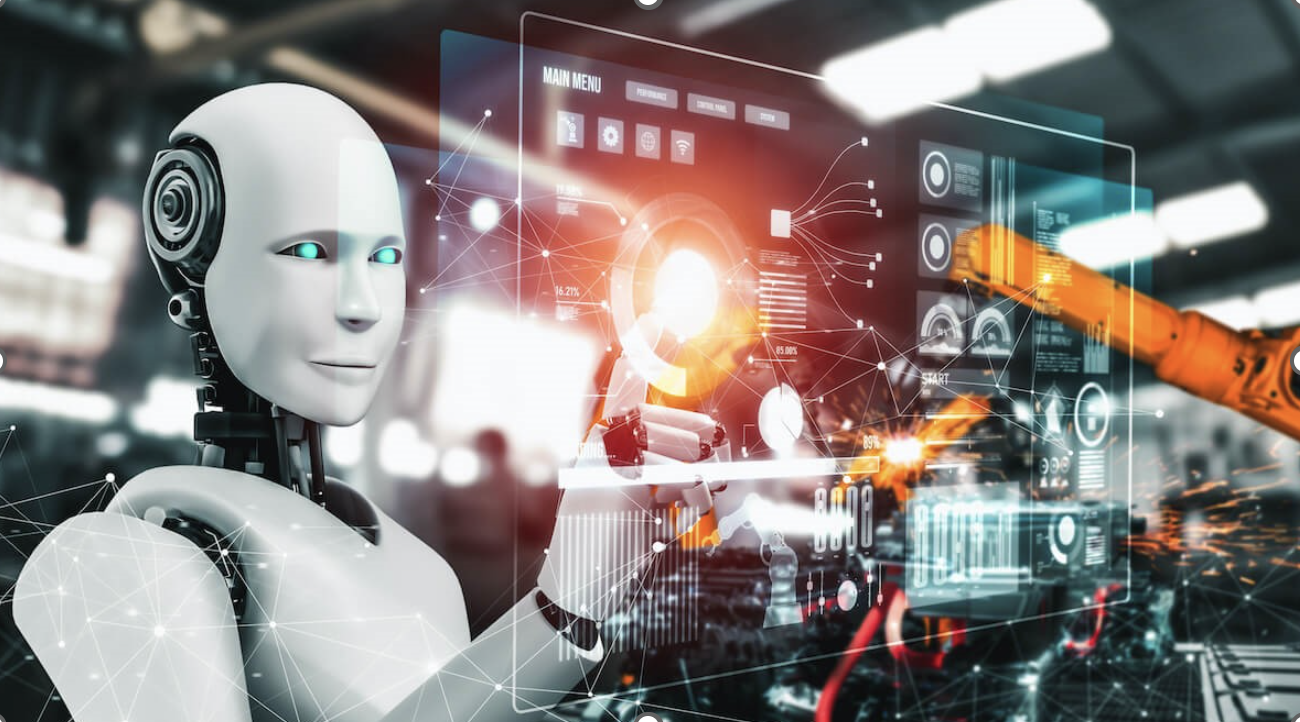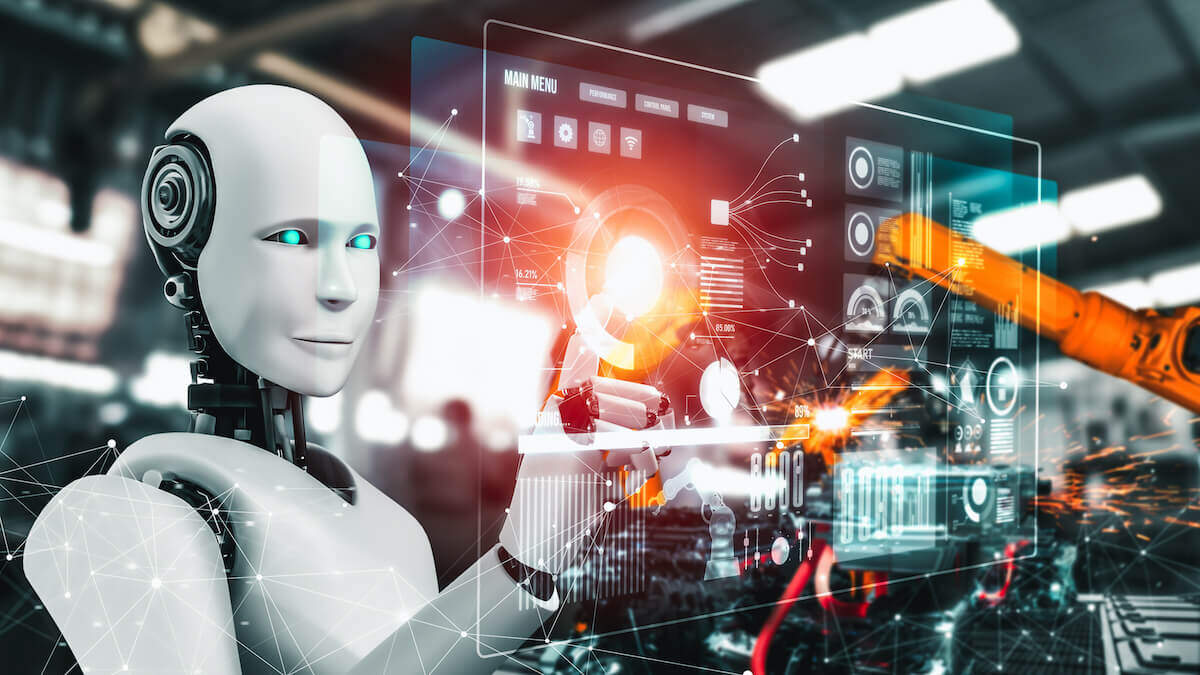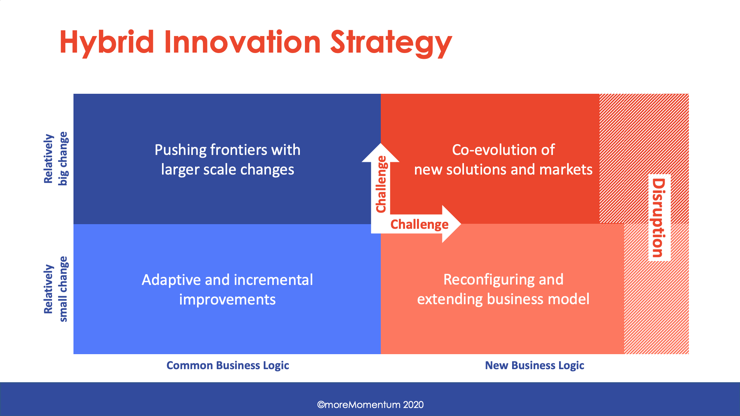Leveraging Generative AI in Service
In the era of advanced manufacturing, integrating technology, optimising processes, and enhancing human skills are essential for efficient and...

In the era of advanced manufacturing, integrating technology, optimising processes, and enhancing human skills are essential for efficient and adaptable service delivery systems. Manufacturers must evolve to stay competitive and meet customer expectations.
Imagine a future where service delivery systems in manufacturing seamlessly blend cutting-edge technology, streamlined processes, and deep human expertise. In this envisioned future, the integration of advanced technologies such as the Internet of Things (IoT), Artificial Intelligence (AI), and Augmented Reality/Virtual Reality (AR/VR) doesn't just support existing operations—it transforms them, unlocking unprecedented levels of efficiency and new possibilities for growth.
However, the journey towards this future is not without its challenges. Today, many manufacturers grapple with adopting these technologies while trying to maintain or improve operational efficiency. The gap between the potential of these technologies and their practical application remains wide as organisations struggle to integrate these digital tools into their existing service frameworks.
This struggle is compounded by the need to synchronise these technologies with human expertise. Without a balanced approach, manufacturers risk inefficiency and falling behind in a competitive market where service delivery can be a crucial differentiator.
Achieving next-level efficiency in service delivery requires a unified approach that integrates state-of-the-art technology with skilled human intervention and optimally designed processes. This integration is crucial for creating service systems that are not only efficient but also robust and adaptable to future challenges and innovations.
How can manufacturers drive efficiency gains by adopting new technologies to ensure their service delivery is efficient and adaptable to future challenges?
This question lies at the heart of our exploration, aiming to unveil strategies that harmonise technology, people, and processes in service delivery.
The evolution of field service in manufacturing is rapidly accelerating, driven by the transformative potential of predictive analytics, artificial intelligence (AI), and remote diagnostics. These technologies are foundational to creating a new paradigm in service excellence that significantly enhances operational efficiency. By analysing data from equipment and sensors, predictive analytics and AI can anticipate failures before they occur, facilitating proactive maintenance that avoids costly downtime and emergency repairs.
Furthermore, integrating remote diagnostics enhances the effectiveness and efficiency of on-site field service. This technology allows experts to troubleshoot and resolve issues from a distance, guiding on-site technicians in real time. As a result, many problems can be identified and addressed without additional trips, saving time and resources. This capability not only streamlines field operations but also improves the accuracy and speed of service delivery, ensuring that field technicians' work is precise, targeted, and more likely to resolve issues on the first attempt.
Augmented Reality (AR) and Virtual Reality (VR) technologies are revolutionising field teams' operations. By using AR glasses or VR headsets, field service engineers or customers' maintenance teams can receive real-time support and expert guidance during complex repairs or maintenance tasks. Integrating digital information into the physical work environment dramatically improves the accuracy and efficiency of field service operations.
These advanced technologies also play a crucial role in reducing the administrative burden on field engineers. Automation of data entry and report generation allows engineers to focus more on critical technical tasks rather than routine paperwork. This shift enhances job satisfaction among field personnel and improves the quality of service delivered to customers.
Technology significantly impacts travel and scheduling efficiency. Smarter scheduling tools enable more efficient planning of service visits, reducing unnecessary travel and optimising the deployment of field resources. This streamlined approach ensures that field engineers spend more time on value-added activities, enhancing field operations' overall productivity and efficiency.
Manufacturers can redefine field service excellence by leveraging the capabilities of AI, AR/VR, and smart scheduling tools. This transformation not only boosts the efficiency of field operations but also significantly enhances service quality, leading to higher customer satisfaction and loyalty.
Automation is pivotal in transforming the efficiency of in-house operations within manufacturing service delivery. Manufacturers can significantly reduce the time and labour traditionally required by automating diagnostics, work preparation, and planning processes. Automated systems can quickly analyse conditions, predict necessary maintenance tasks, and prepare the required resources without manual intervention. This speeds up operations and increases accuracy, reducing the likelihood of errors and rework.
Data analytics has become a game-changer in how manufacturers manage dispatching, resource management, and scheduling. By leveraging data, organisations can make more informed decisions that optimise the use of resources and improve service response times. Analytics can identify patterns and trends that are not immediately apparent, allowing service managers to anticipate needs and allocate resources more effectively. This capability ensures that the right personnel and equipment are available when and where needed, enhancing overall operational efficiency.
Streamlining work administration is crucial for ensuring that the transition from service delivery to billing is as smooth as possible. Simplifying this process involves integrating systems automatically tracking service delivery metrics and seamlessly feeding this information into billing systems. Manufacturers can decrease administrative overhead, minimise errors, and shorten the billing cycle by reducing the manual steps required to convert service data into billable information. This efficiency improves cash flow and enhances customer satisfaction by promptly providing clear, accurate billing information.
Overall, streamlining in-house operations through automation, data analytics, and integrated administrative systems is essential for manufacturers looking to enhance efficiency and maintain competitiveness in a rapidly evolving market. By adopting these technologies, companies can ensure more agile, responsive, and efficient service delivery, setting a solid foundation for sustained growth and customer loyalty.
Adopting advanced maintenance engineering practices in service delivery marks a significant stride toward optimising operational efficiency. Leveraging cutting-edge technologies such as predictive maintenance tools and advanced diagnostics systems minimises the frequency and complexity of maintenance activities. These technologies predict potential issues before they become problematic, allowing for timely interventions that prevent costly breakdowns and unplanned downtime. By ensuring equipment operates at peak efficiency for longer periods, these technological solutions extend the machinery's lifecycle and streamline maintenance procedures, making them less intrusive and more cost-effective.
The design of products plays a crucial role in their serviceability, which in turn impacts overall service efficiency and downtime. By prioritising serviceability in product design, manufacturers can ensure that their products are easier to maintain, repair, and upgrade. Modular components, standardised parts, and accessible configurations make it simpler for service technicians to perform their tasks quickly and effectively. This approach reduces the time required for each maintenance session and minimises the disruption to operations, leading to significant improvements in uptime and customer satisfaction.
Moreover, integrating serviceability into product design often involves close collaboration between designers, engineers, and service teams to ensure that maintenance considerations are embedded from the earliest stages of product development. This collaborative approach ensures that the products are not only built to last but also built to be maintained efficiently and cost-effectively throughout their operational life.
In summary, innovating maintenance practices and redesigning products for better serviceability are pivotal in reducing downtime and enhancing service efficiency. These strategies are essential for manufacturers who aim to lead in market competitiveness and customer satisfaction by offering reliable, easy-to-maintain products and efficient service solutions. By focusing on these areas, companies can significantly reduce the total cost of ownership and foster stronger, more loyal customer relationships.
Integrating cutting-edge technology with skilled human expertise forms the cornerstone of a sustainable and scalable service delivery model in manufacturing. This synthesis not only enhances operational efficiency but also fortifies the resilience of service systems against rapidly changing market demands and technological advancements.
By leveraging advanced technologies such as AI, IoT, and machine learning, manufacturers can equip their human workforce with tools that enhance decision-making, increase precision, and reduce the burden of routine tasks. For example, AI-powered analytics can provide service technicians with deep insights into equipment performance and maintenance needs, allowing them to address potential issues proactively and with greater accuracy.
However, this equation cannot understate the value of human expertise. While technology provides the data and automation necessary for efficiency, the human touch interprets this information and makes nuanced decisions that technology alone cannot. Skilled professionals bring contextual understanding, emotional intelligence, and creative problem-solving to the table—qualities that are crucial for handling complex scenarios and fostering customer relationships.
The successful integration of these elements leads to a service delivery model that is more efficient and adaptable to new challenges. It enables manufacturers to maintain a high standard of service quality, improve customer satisfaction, and ultimately, drive business growth. By investing in both technological tools and human capital development, manufacturers can create a robust service infrastructure that stands the test of time and innovation.
Throughout this article, we have explored how a balanced approach integrating cutting-edge technology with skilled human expertise transforms manufacturing service delivery. Manufacturers can achieve remarkable improvements in efficiency and customer satisfaction by reimagining field service, streamlining in-house operations, innovating maintenance practices, and redesigning products for better serviceability.
We invite you to consider how these strategies can be implemented within your operations to meet and exceed your customers' evolving expectations.
Our upcoming Service Roundtable in July 2024 provides an ideal platform for those eager to delve deeper into these themes. Here, leaders and innovators will come together to further explore and share insights on enhancing service delivery across the manufacturing sector.
Join us to shape the future of service excellence and ensure your operations are as efficient, adaptable, and forward-thinking as possible.
In the Service Roundtable in July 2024, we explored a vital theme: Redefining Service Delivery for Efficiency.
This Roundtable was an invaluable platform for delving into the intricacies of contemporary service challenges and opportunities.
Check the post-event materials to gain invaluable insights and uncover actionable strategies to help you turn challenges into opportunities.
Review the recording, slide deck and meeting notes.
Subscribe for the our Impulse Letter
With regular updates about service news, trends and best practices.

In the era of advanced manufacturing, integrating technology, optimising processes, and enhancing human skills are essential for efficient and...

In the era of advanced manufacturing, integrating technology, optimising processes, and enhancing human skills are essential for efficient and...

A balanced mix of sustaining, adjacent, and transformational innovations is essential for long-term success in B2B manufacturing, but many companies...